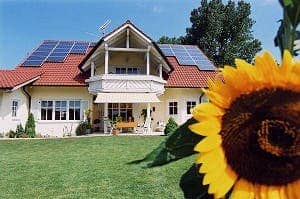
Germany has reached a new renewable energy milestone recently after the country announced that on a given day an impressive 50.6% of its energy demand was covered by solar energy alone. Breaching this important psychological barrier means a lot of for renewable energy efforts in Germany, and worldwide as well serving as an example.
According to researchers at the Fraunhofer ISE research institute, German solar panels generated a record 24.24 GW of electricity between 1pm and 2pm on Friday, June 6th. The distribution record was broken on Monday June 9th, a public holiday, when solar power production peaked at 23.1 GW, which was 50.6 percent of total electricity demand.
The record culminates years worth of planning and effort from Germany’s part. The real credit, however, belongs to German citizens, and not the government. You see, some 90% of the solar energy produced in Germany comes from household roof-mounted panels. At the end of 2012, Germany had installed considerably more solar power capacity per capita than any other country. The rapid growth has slowed, however, with 3.3 GW of PV installed in 2013, compared to 7.6 in 2012.
This kind of impressive development was made possible thanks to a number of subsidies and government programs like the the simple feed-in tariff (FIT) policy, which pays renewable energy producers a set amount for the electricity they produce under long-term contracts. This way, the solar energy boom in Germany was driven not by huge, corporate solar farms, but by combined individual efforts.
In the first quarter of 2014, renewable energy sources met a record 27 percent of the country’s electricity demand, thanks to additional installations and favorable weather. Germany’s 27 percent is double the approximately 13 percent of U.S. electricity supply powered by renewables as of November 2013. The United States gets 0.2 percent of its energy from solar.


